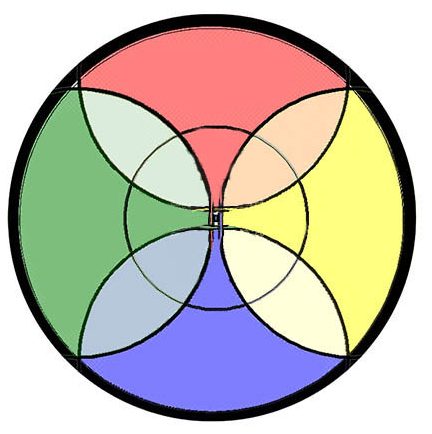Working with your body artistically is prone to misunderstanding. Art involving your body is powerful and immediate, and this can help you learn and communicate in a very personal way. However, the individual nature of the art can isolate you from the communal nature of Christianity and God, some practices can also have long-term effects that will remain with us decades after an act. The Old Testament describes the growth and development of Jewish culture and is therefore a source of direct comment on many practices which could be described as performance art. Some of these mentions are positive, like Miriam leading a dance in Exodus. Some describe negative responses, for example when the wife of king David despises him for dancing in a manner and state of undress which perhaps she thought was not appropriate to his station. There are also records of prophets discussing the moderation of their activity with God. Ezekiel tones down his prophetic protest art from eating bread cooked on human dung, to that of bread cooked using animal dung[1].

As a teenage boy from Glasgow in the 1980’s, dancing with floaty scarves in the aisles of churches or on the streets (in a manner akin to 1980’s teen-pop stars promoting their new release in U.S. shopping malls) was not something which appealed to me, despite it being the form of creative expression ground breaking adults were comfortable with. Finding examples stories like the ones above from a geographically-remote bronze age culture helped me form a reasoned response (and temper) my emotional reaction. The role heavy-metal music, piercings and tattoos have played in my spiritual development likewise will not be to everyone’s taste. (Some worked examples from the bible here) but the principles which shaped and guided their creative response are still applicable.
I am writing this decades after the emergence of youth culture, in a world where young people grow up presented with a variety of options from which to form their ‘ethos’ that goes far beyond the Beatles taking a trip to India. There is a profound need to develop a spiritual literacy which accepts diversity and equips people to discover a sense of identity in an environment where even the body you are born into no longer limits the person you will become.
This section is included in the guide to encourage you to dedicate your sense of fashion and personal artistic expression to God. I don’t suggest that people should make buying a new pair of socks into a major ritual, but each choice and action we make can be a practice of the presence of God. Some actions are more significant than others, and these should especially be carried out in the context of prayer. A lot of thought and emotion goes into the design and purchase of a wedding dress, for example. There are already some symbolic items associated with this type of dress, like the veil and the bouquet. What if you recognised the potential of this symbolism and adapted it to express your thoughts and beliefs? Why restrict this level of artistic involvement with your body and environment to one day of your life? Take time out to consider your body, clothes and jewellery and allow your God-given creativity space to express itself.

As usual, I encourage readers to make this an expressive action, primarily between you and God. Consider the effect it will have on other people and be careful not to reduce your art to a mechanistic means of preaching. Perhaps the changes you make will only be noticed by yourself. If you are living in relationship with God, and allow yourself to be sensitive to the promptings of the Holy Spirit, this can be a way that new life permeates your living. This will communicate much more powerfully in the long term than accessorising to fit in with other church-goers.
An example of an invisible change you could make is to consider carefully the processes which go into producing your clothing, and the environmental impact of your choices. You might be inspired to take a prophetic route by wearing hand made homespun clothes, standing out from the crowd as a witness to an alternative way of living!
Advantages
These techniques carried out in the context of prayer can be a powerful visual representation of an otherwise invisible change. Whilst your awareness will be heightened in the lead up to, during and after the event, there will often be a long term process as well. This can remind you of the significance and also communicate to others. Imagine a couple tattooing wedding rings on each other’s fingers. The link between a sense of otherness about the activity and the physical sensations of the process is particularly obvious in this section.
Disadvantages:
“With great power comes great responsibility!” In most circumstances, the power is primarily going to affect you personally, and your responsibility is to care for yourself. God is passionate, but we do not need to go to extremes to get Gods’ attention or to prove ourselves. All prayer builds links between the world of physical sensation and spiritual sensing. I encourage you to develop the ability to master the subtle power of a song, or a smile at the right time. Also, don’t get too hung up on or bogged down by all this talk of art and symbolism! Love and live simply.
Variations:
Have patience, trust yourself and God will inspire you. Experiment, but be aware that some experiments have long-term effects – search out understanding of your impulses and ask “is it worth it, even if in the future I think differently?”

